Alice Leora Briggs
Available Work
Alice Leora Briggs is known for works that comprise provocative amalgams of classical and contemporary imagery that illuminate the narcotic trade-driven violence of Ciudad Juárez. In addition to her traditional subject matter, this new exhibition includes images that “are an examination of my own history and that, hopefully, manifest some larger meaning.”
Briggs now cares for her elderly mother, who is living with dementia. “I’m in strange territory now,” the artist says. “Instead of Mexico, I’m in ‘Dementia’. But my work has always been about mortality. That’s the overarching theme.”
Despite history, a continuum stretches from art’s ancient past to its present. Memento mori—reminders of mortality—are reflected by our own mirrored faces so that our actions might be meaningful, even worthwhile; as we also remember the impermanence of our lives.
“What an amazing gift this is,” marvels Briggs—“to be able to breathe, make work about this [existence], and make some attempt to communicate [this gift] to other people.”

La Familia
sgraffito and acrylic on panel, 16" x 61"
$13,800
INQUIRE
Fall
sgraffito and gesso with ink wash on panel, 24" x 36"
$12,500
INQUIRE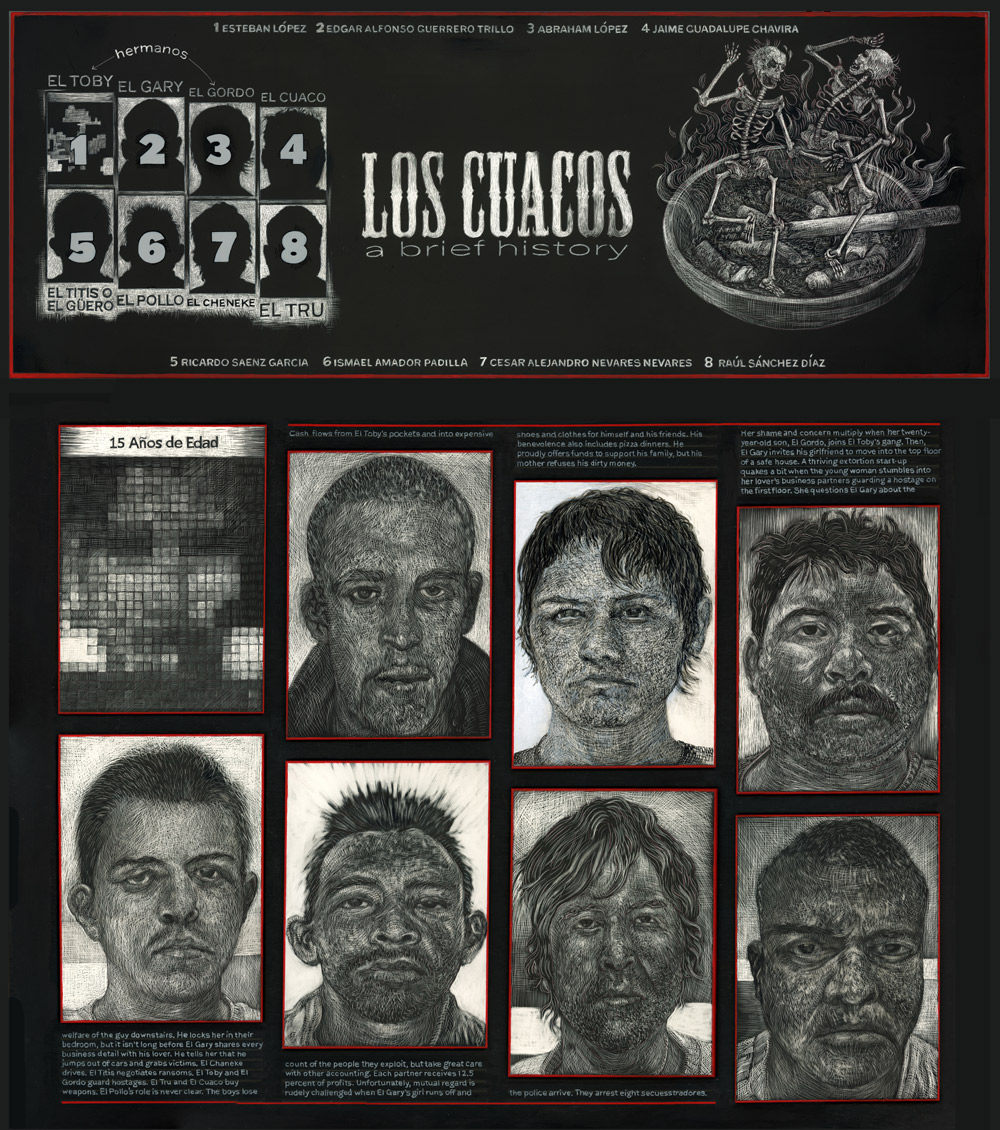
Los Cuacos
sgraffito and acrylic on panel, 28" x 24"
$10,500
INQUIRE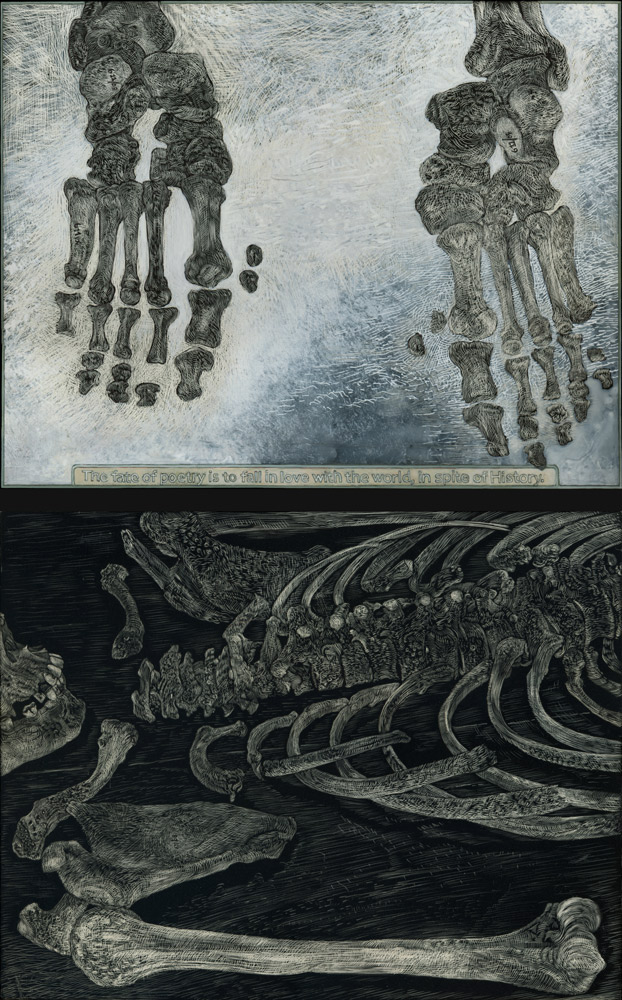
The Fate of Poetry (diptych)
sgraffito and acrylic on panel, 22.5" x 14"
$5,400
INQUIRE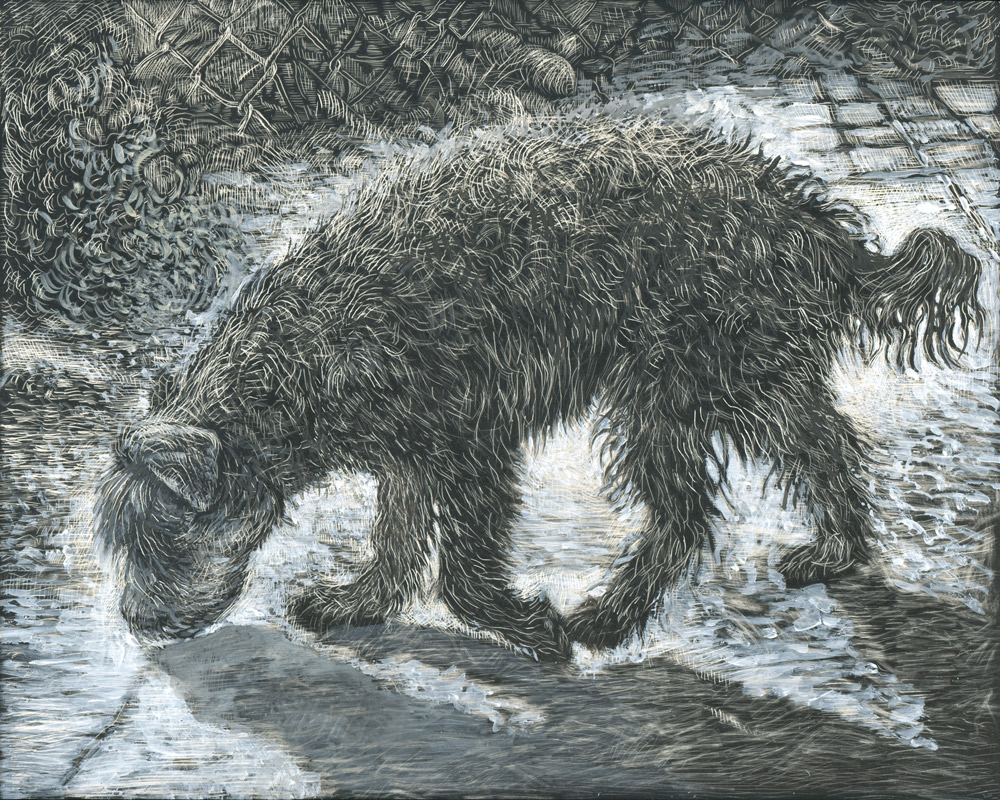
Perro Peludo
sgraffito and acrylic on panel, 8" x 10"
$1,600
INQUIRE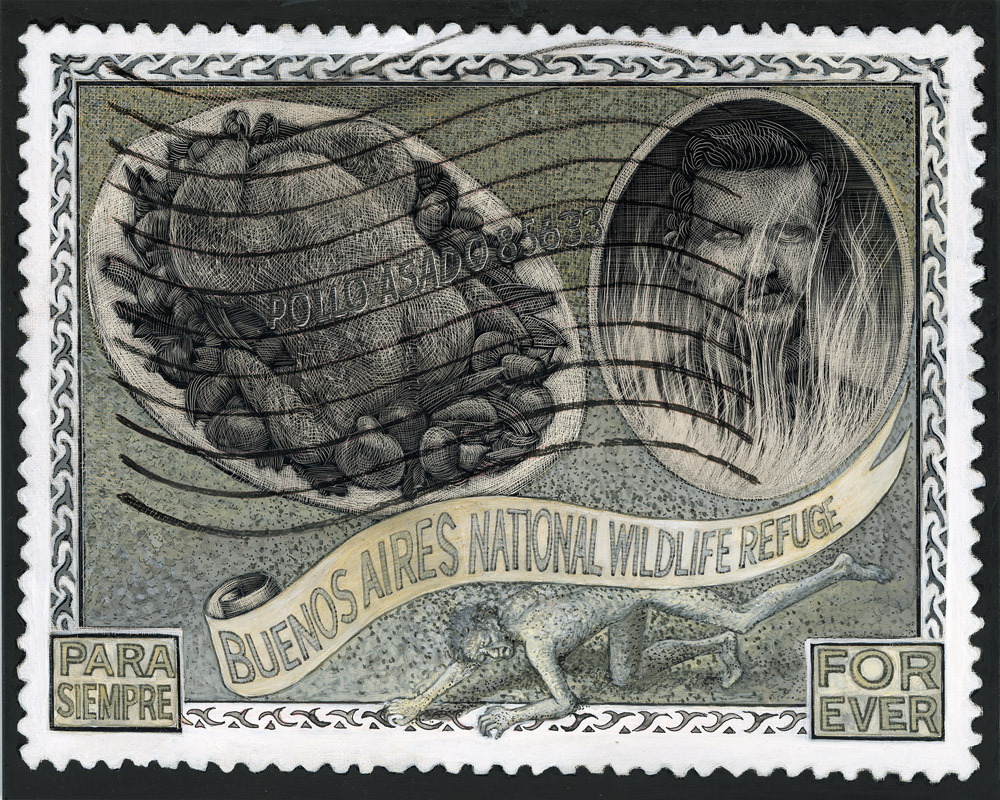
Buenos Aires
sgraffito and acrylic on panel, 8" x 10"
$1,600
INQUIRE
Para los que siguen sin creer
sgraffito on panel, 16" x 20"
$4,900
INQUIRE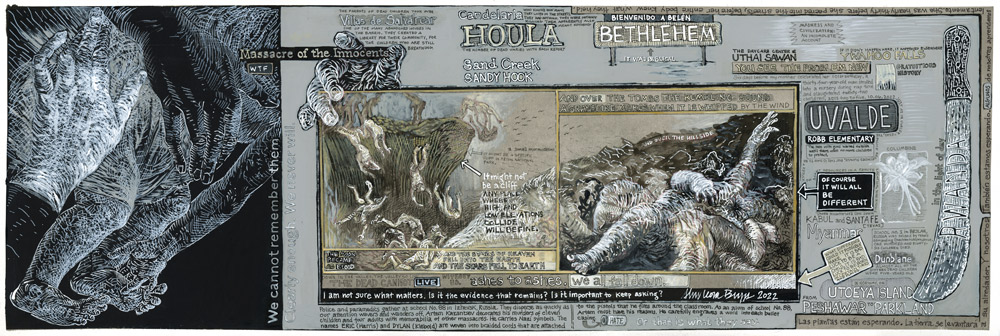
Massacre of the Innocents
mixed media, 13" x 33"
$4,500
INQUIRE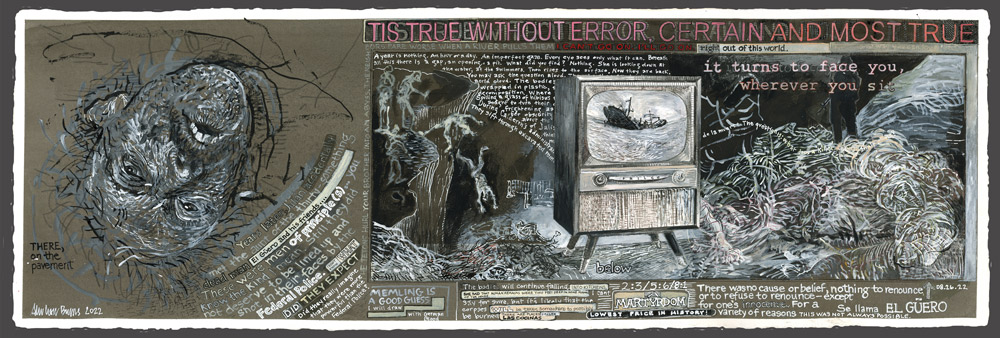
Tis True Without Error
mixed media, 13" x 33"
$4,500
INQUIRE
The Ship Has Not Yet Sunk
ink, acrylic and collage on paper, 16" x 42"
$7,500
INQUIRE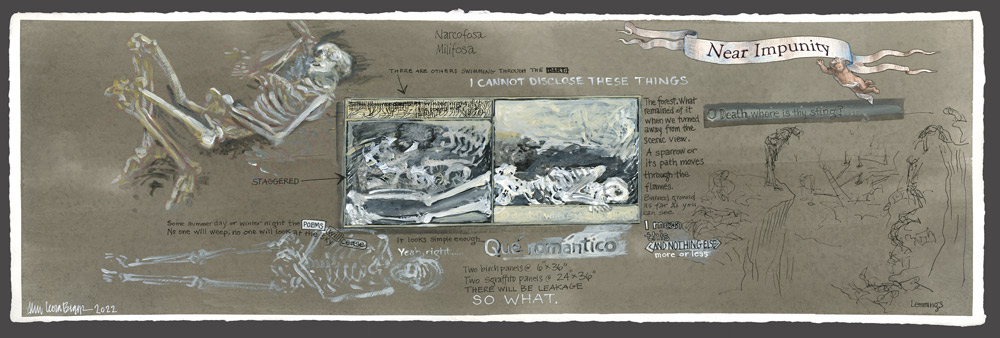
Near Impunity II
mixed media, 13" x 33"
$4,500
INQUIRE
Blunder
burn drawing with ink on handmade paper, 5" x 22"
$1,500
INQUIRE
El Taller
sgraffito on panel, 14" x 11"
$2,700
INQUIRE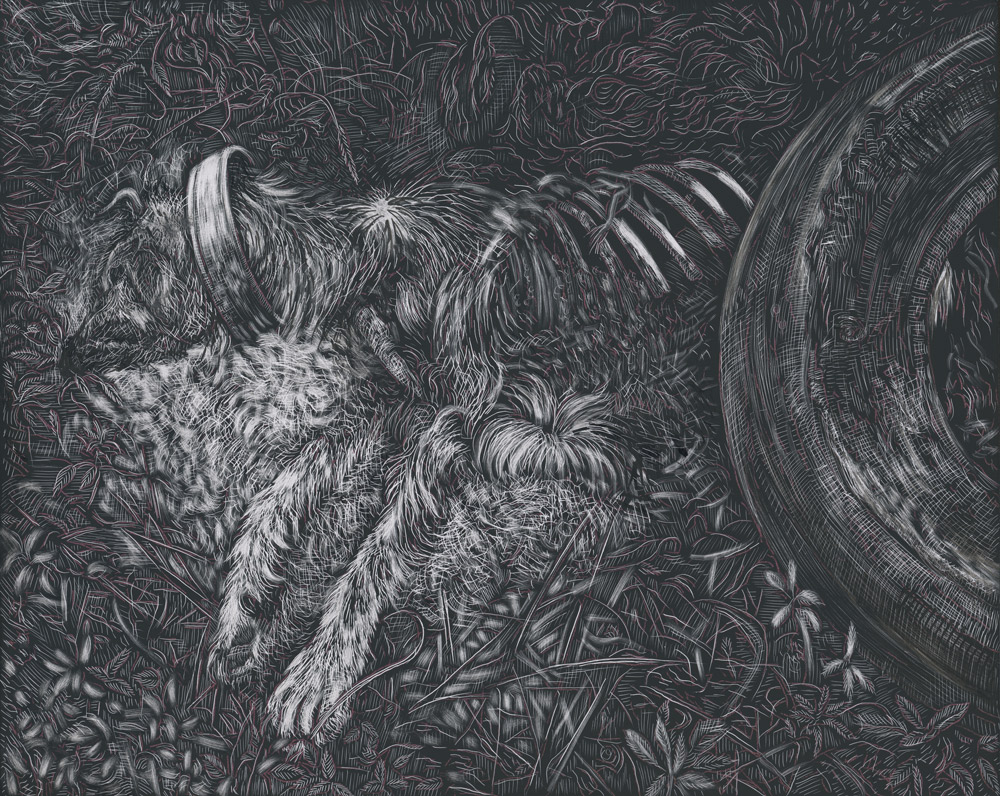
Perro Abandonado
sgraffito on panel, 8" x 10"
$1,600
INQUIRE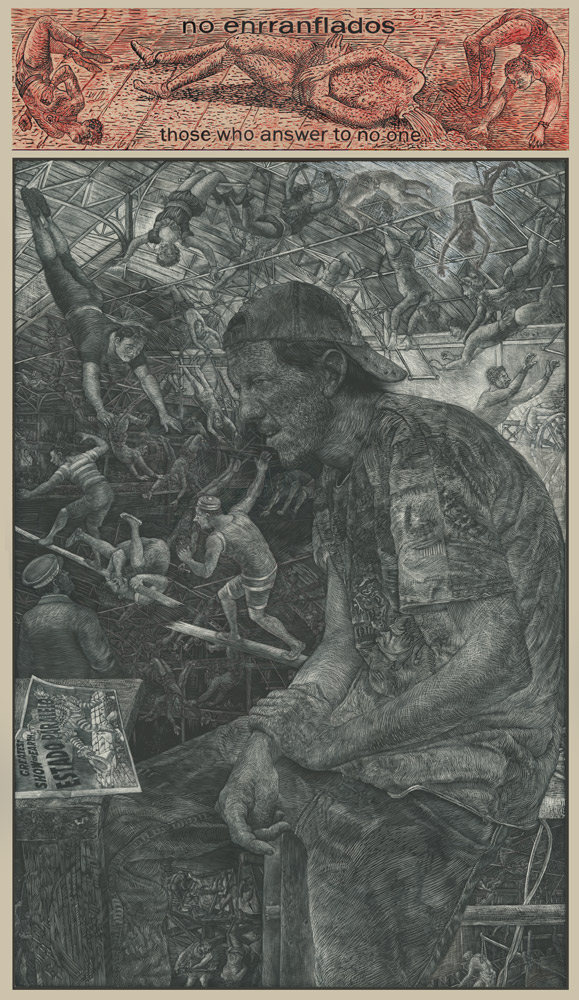
No Enrranflados
sgraffito and acrylic with carved wood, 43" x 25.5"
$13,400
INQUIRE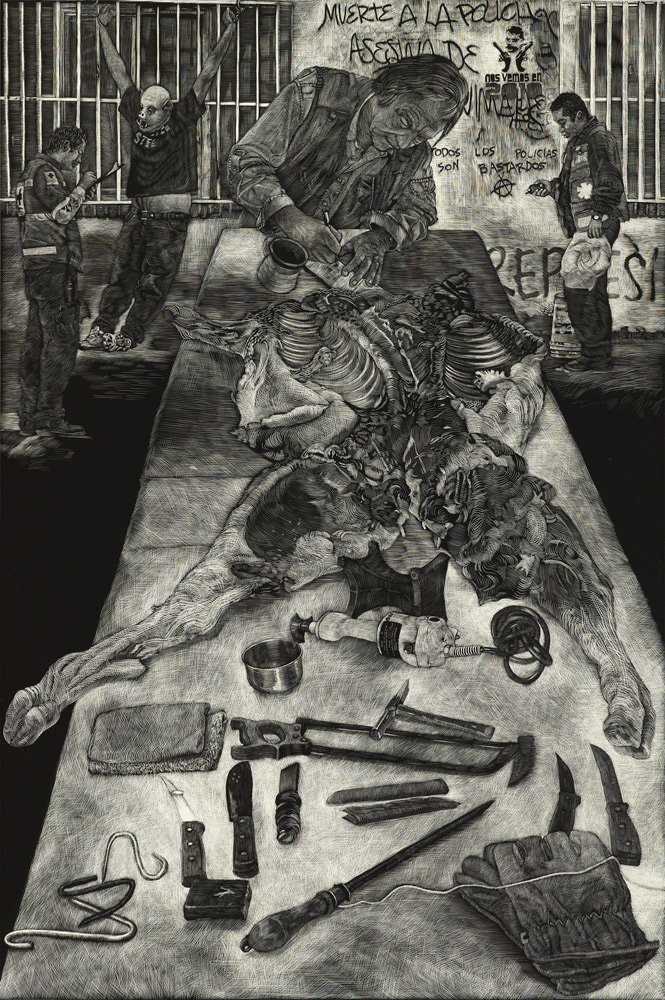
Necessary Tools
sgraffito and acrylic on panel, 36" x 24"
$12,500
INQUIRE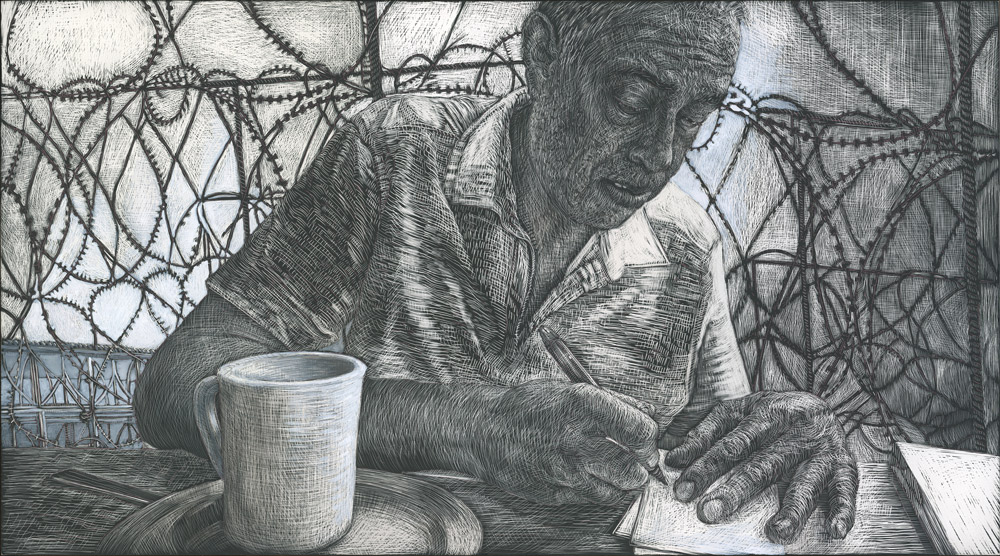
El Cruce
sgraffito and tinted gesso on panel, 10" x 18"
$3,100
INQUIRE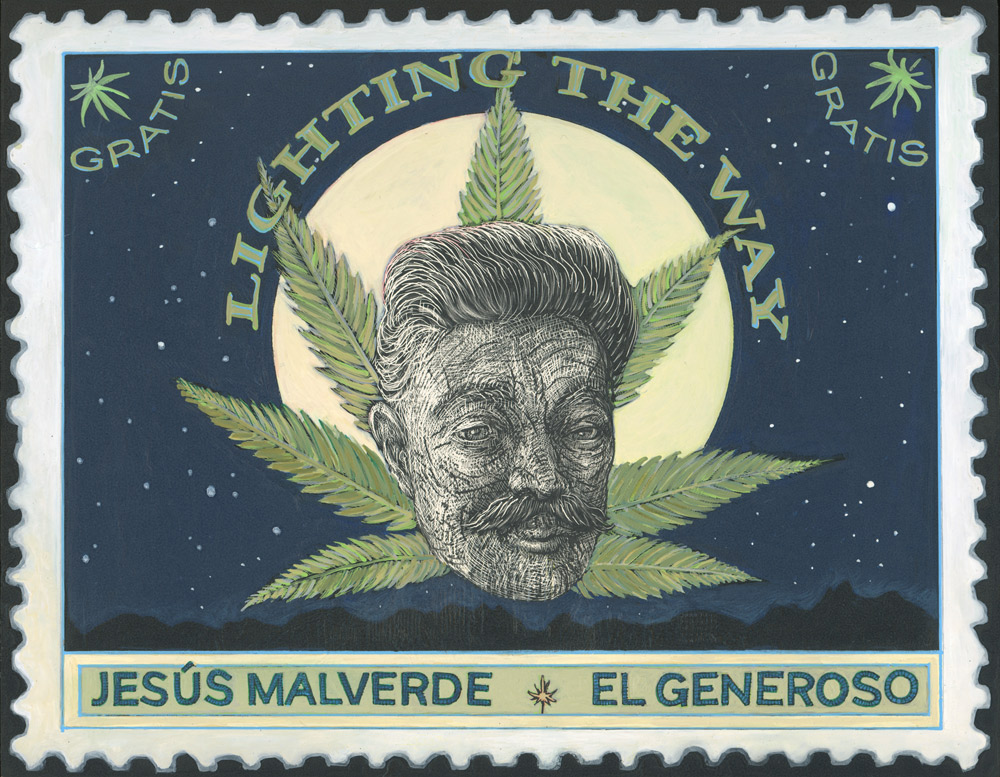
El Generoso
sgraffito and acrylic ink on panel, 8" x 10"
$1,600
INQUIRE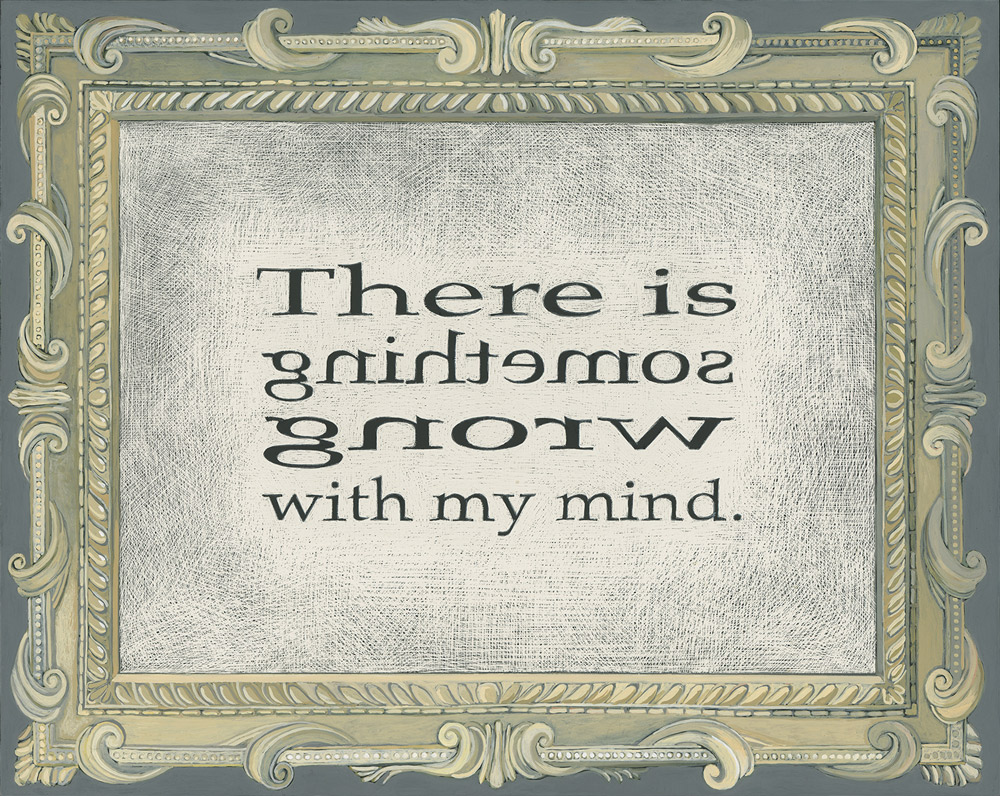
There is something wrong with my mind
sgraffito and acrylic ink on panel, 8" x 10"
$1,600
INQUIRE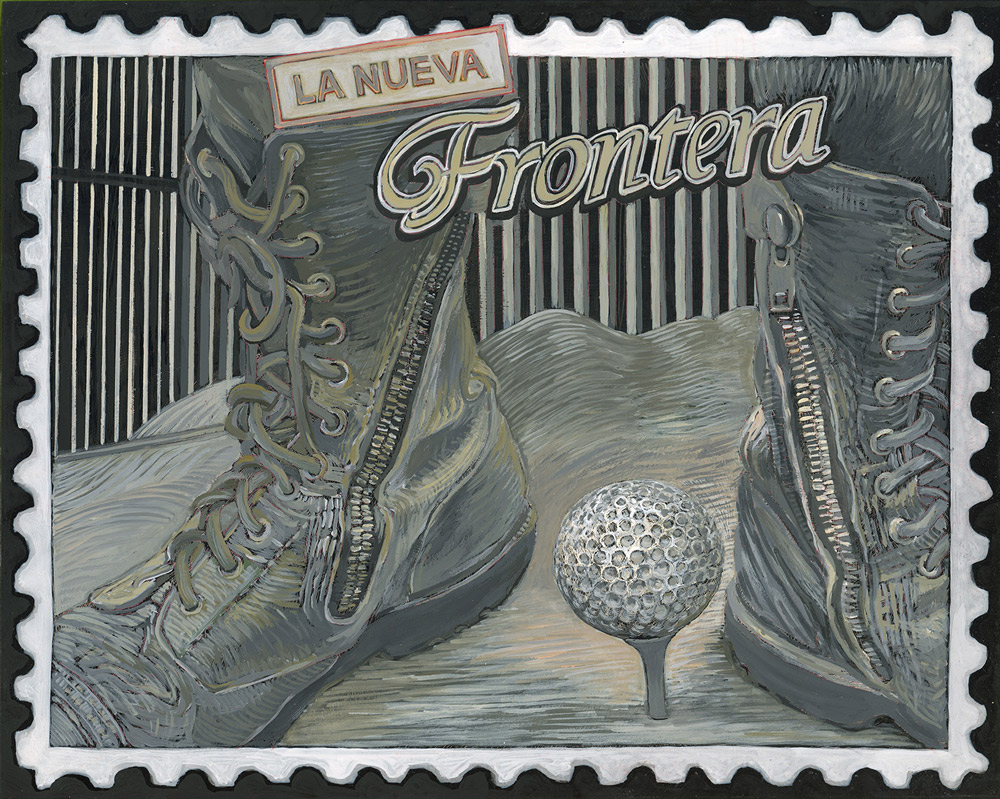
La Nueva Frontera
sgraffito and acrylic ink on panel, 8" x 10"
$1,600
INQUIRE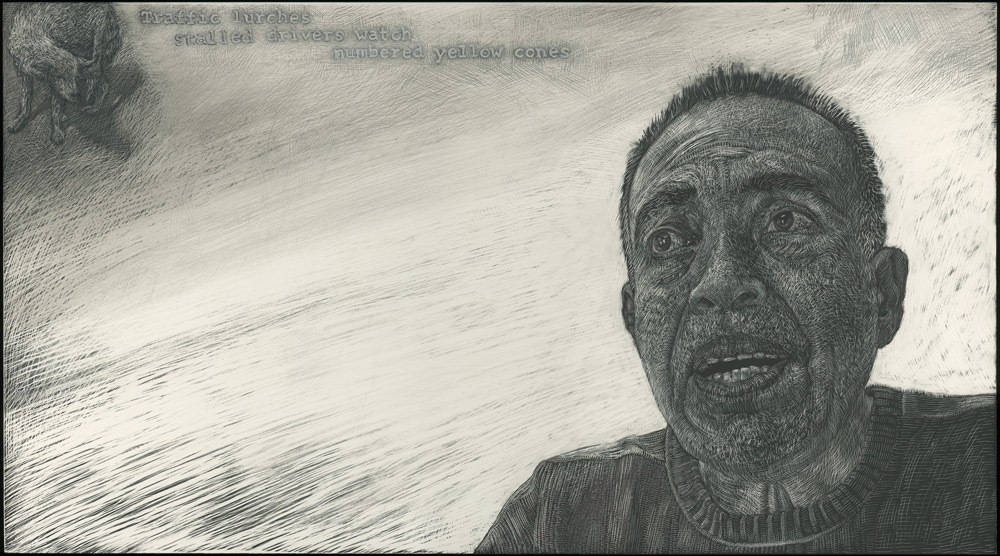
Spent
sgraffito and tinted gesso on panel, 10" x 18"
$3,100
INQUIRE
Falso Positivo
sgraffito and acrylic on panel, 10" x 18"
$3,100
INQUIRE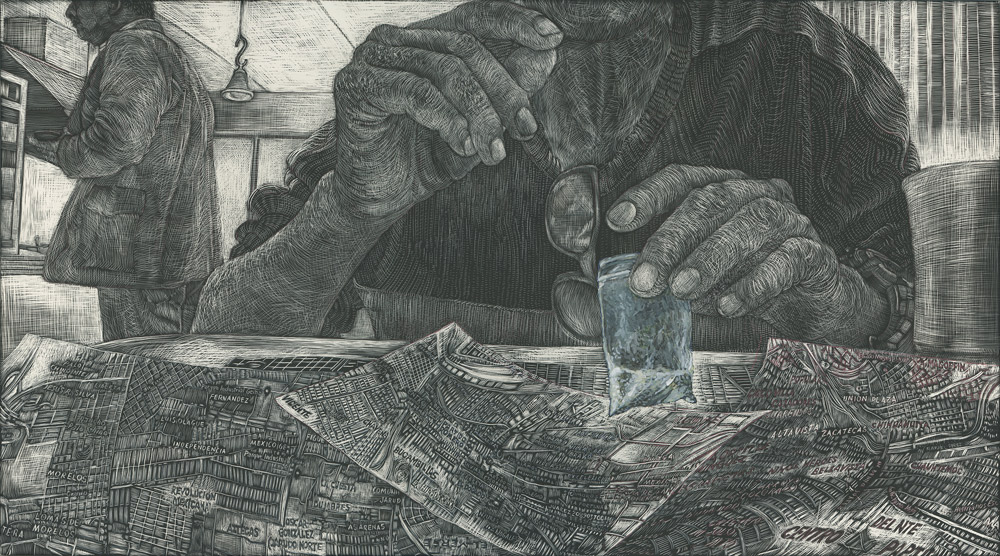
El Regalo
sgraffito and tinted gesso on panel, 10" x 18"
$3,100
INQUIRE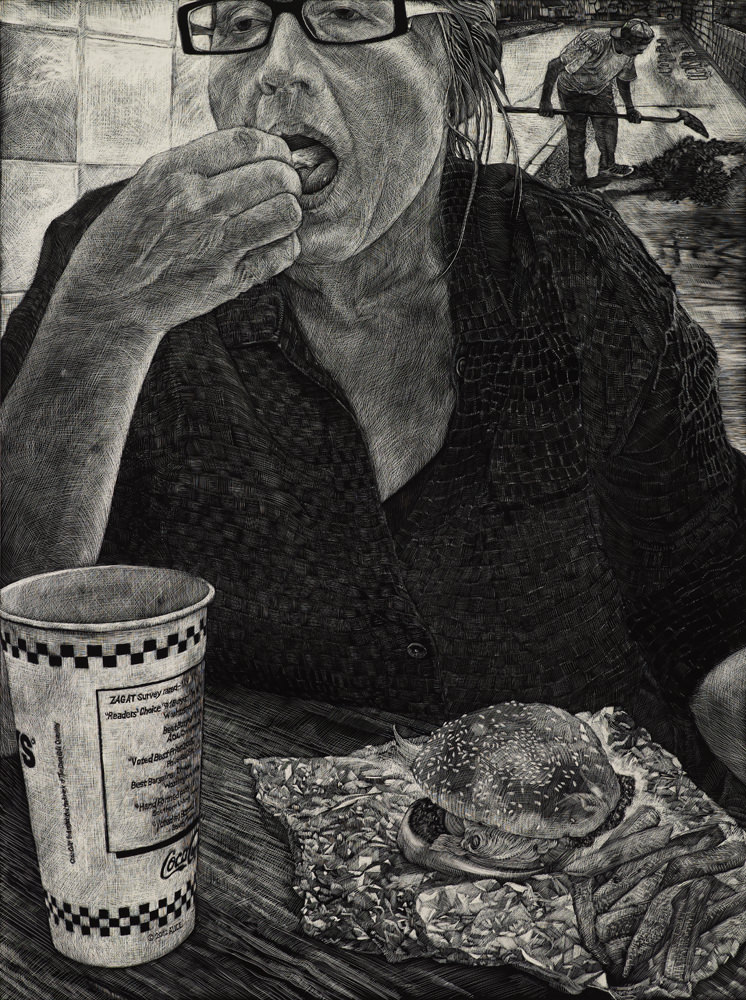
¡Basta!
sgraffito on panel, 24" x 18"
$4,600
INQUIRE
























